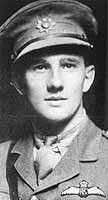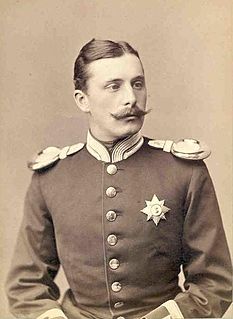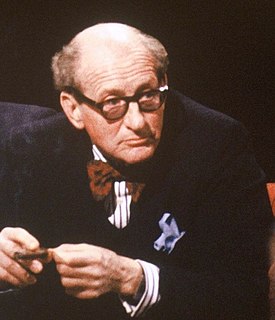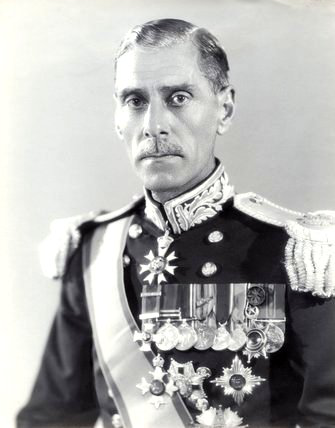 W
WCaptain Barry Nugent Yelverton, 5th Viscount Avonmore was an Anglo-Irish peer and an officer in the 37th Foot, which was renamed as the Hampshire Regiment in 1881.
 W
WAir Marshal Sir Philip Babington, was a Royal Air Force officer who served as Air Officer Commanding-in-Chief of Flying Training Command from 1942 to 1945 during the Second World War. He was the younger brother of John Tremayne Babington.
 W
WDouglas Corney Breton was a soldier and a provincial politician from Alberta, Canada. He served as a member of the Legislative Assembly of Alberta from 1926 to 1930 sitting with United Farmers caucus in government.
 W
WFlight Lieutenant Robert Leslie Chidlaw-Roberts was a British World War I flying ace credited with ten aerial victories. During his aerial combat career, and in different dogfights, he engaged two famous German aces; he was one of the British pilots who downed Werner Voss, and on 9 January 1918, he shot down and killed Max Ritter von Muller.
 W
WGodfrey Elton, 1st Baron Elton, was a British historian.
 W
WSir Arthur Sackville Trevor Griffith-Boscawen PC was a British politician in the Conservative Party whose career was cut short by losing a string of Parliamentary elections.
 W
WGeneral Sir Richard Cyril Byrne Haking was a British general who commanded XI Corps in the First World War.
 W
WSir Cecil Robert Havers was an English barrister and High Court judge.
 W
WPrince Henry of Battenberg was a morganatic descendant of the Grand Ducal House of Hesse. He became a member of the British royal family by marriage to Queen Victoria's youngest child, Princess Beatrice of the United Kingdom. Through his daughter, Princess Victoria Eugenie of Battenberg, who became the Queen of Spain by marriage, Henry is a direct ancestor of current members of the Spanish royal family.
 W
WDennis George Wyldbore Hewitt VC was an English recipient of the Victoria Cross. He was awarded during an action at Pilckem Ridge at the Battle of Passchendaele.
 W
WPeter Stuart Hopkirk was a British journalist, author and historian who wrote six books about the British Empire, Russia and Central Asia.
 W
WAntony Claud Frederick Lambton,, briefly 6th Earl of Durham, styled before 1970 as Viscount Lambton, and widely known as Lord Lambton, was a Conservative Member of Parliament and a cousin of Sir Alec Douglas-Home, the former Prime Minister and Foreign Secretary. Lambton resigned from Parliament and ministerial office in 1973.
 W
WBrigadier Herbert Wallace Le Patourel was a British recipient of the Victoria Cross, the highest award for gallantry in the face of the enemy that can be awarded to British and Commonwealth forces.
 W
WTom George Longstaff was an English doctor, explorer and mountaineer, most famous for being the first person to climb a summit of over 7,000 metres in elevation, Trisul, in the India/Pakistan Himalayas in 1907. He also made important explorations and climbs in Tibet, Nepal, the Karakoram, Spitsbergen, Greenland, and Baffin Island. He was president of the (British) Alpine Club from 1947 to 1949 and a founding member of The Alpine Ski Club in 1908.
 W
WLieutenant-Colonel John Frederick MacKay was a Scottish recipient of the Victoria Cross, the highest and most prestigious award for gallantry in the face of the enemy that can be awarded to British and Commonwealth forces.
 W
WJoseph Sidney Mitty MBE was a British salesman and the man who turned the first Oxfam gift shop into a national retail network of shops selling second hand clothing and other goods. This network put Oxfam on the high street map and has contributed substantially to Oxfam's income as well as presence in the public eye over the years. It was also an inspiration for many charities to follow Oxfam's lead.
 W
WLeonard Nathaniel Goldsmid-Montefiore was a wealthy member of the Montefiore family, the only son of Claude Montefiore, and he succeeded his father as a leader of Jewish philanthropic organisations in the UK including the Anglo-Jewish Association, the Central British Fund for German Jewry, and the Jewish Board of Guardians. He was a founder and president of the Wiener Library for the Study of the Holocaust and Genocide.
 W
WGeorge Raymond Dallas Moor, was a recipient of the Victoria Cross, the highest award for gallantry in the face of the enemy that can be awarded to British and Commonwealth forces. He was awarded the Victoria Cross for stemming a rout by shooting four soldiers during the Gallipoli campaign in 1915.
 W
WMontague Shadworth Seymour Moore VC was an English recipient of the Victoria Cross, the highest and most prestigious award for gallantry in the face of the enemy that can be awarded to British and Commonwealth forces.
 W
WPaul Nash was a British surrealist painter and war artist, as well as a photographer, writer and designer of applied art. Nash was among the most important landscape artists of the first half of the twentieth century. He played a key role in the development of Modernism in English art.
 W
WWilliam Graham Nicholson, PC, JP was a British Liberal Unionist and later Conservative Party politician.
 W
WMajor General William Havelock Chaplin Ramsden, was a senior British Army officer, who is most notable for commanding the 50th (Northumbrian) Infantry Division during the Second World War.
 W
WFarren Soutar, was an English actor and singer who became known for his performances in Edwardian Musical Comedies in the West End and on Broadway. Later he acted in some serious plays. His mother was Nellie Farren, the famous principal boy in Victorian burlesque.
 W
WSir George Stewart Symes, was a British Army officer and colonial governor.
 W
WMajor General Walter Babington "Sandy" Thomas, was a New Zealand-born British Army officer, who served as General Officer Commanding Far East Land Forces from 1970 to 1971. He previously served with the New Zealand Military Forces in the Second World War, where he was decorated, wounded and, at age 24, became the youngest New Zealand battalion commander of the war.
 W
WMajor Richard Wakeford VC was an English soldier and a recipient of the Victoria Cross during World War II, the highest and most prestigious award for gallantry in the face of the enemy that can be awarded to British and Commonwealth forces.
 W
WColonel Robert George Wardlaw-Ramsay FLS, FZS was an army officer and naturalist. His father was Robert Balfour Wardlaw-Ramsay while his mother Louisa was the third daughter of George, eighth Marquess of Tweeddale. He studied at Cheam and Harrow before joining the Hampshire Regiment in January 1871 to be stationed in India, Afghanistan and Burma. His interest in birds began as a young boy and in 1872 he was elected a member of the British Ornithologists' Union and was later (1913-1918) to become its president. He was also a Fellow of the Zoological Society. During his various army postings he took a great interest in the local ornithology. He was a nephew of Arthur Hay, 9th Marquess of Tweeddale and inherited a large collection of over 20,000 bird skins that was later presented to the British Museum. He also edited The Ornithological works of Arthur 9th Marquis of Tweeddale (1881) and towards the end of his life was writing a Guide to the birds of Europe and North Africa (1923) which was published posthumously.
 W
WHenry William Montagu(e) Paulet, 16th Marquess of Winchester was an English peer, landowner, soldier, sportsman, politician and business man. He was known as Lord Henry Paulet from 1887 until 1899.